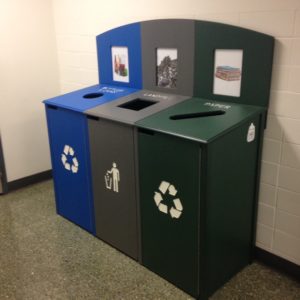Recycling
I had a meeting this past week with a center director and the assistant director to discuss some ideas for upcoming professional development. We went across the street to have lunch while we talked and when we finished we were supposed to go over to the recycling center to sort and dispose of our garbage. This was no easy task as I never know if my soiled napkin is considered “Paper” or “Landfill” and the group couldn’t agree.
It got me thinking about organic ways to get children involved with environmental issues as well as a simple way to have children sort their garbage every day. It didn’t seem quite possible at this center because the children would have to cross over to the other building with their garbage, but when we went back to the center side, lo and behold, they had their very own recycling station there.
I tried to put myself in the place of the classroom teacher and imagine how difficult it would be to have all of the children walk down the hall with their garbage so they could sort and recycle it. I suppose it could be a hassle, but maybe there was a way to sort it out in the classroom and then have a few children tote it down each day with a teacher. They could put “Glass, Metals, and Plastics” on one shelf of the cart, “Landfill” on another and “Paper” on the top. The cart then could travel down to the Recycling Station and a the recycling team could sort it into the appropriate bins.
Or, you could set up a recycling station in each classroom with 3 bins labelled with pictures so that children participate in the process all of the time. Not only does it require sorting when disposing of the garbage, but it requires that children recognize attributes (plastic, dirty paper vs. clean paper, etc.) and categorize the items appropriately.
This is one of the classroom systems that is easy to set up and makes sense if you are playing the long game with children. It may be hard today and even this week, but in the long run, it will be worth it.

